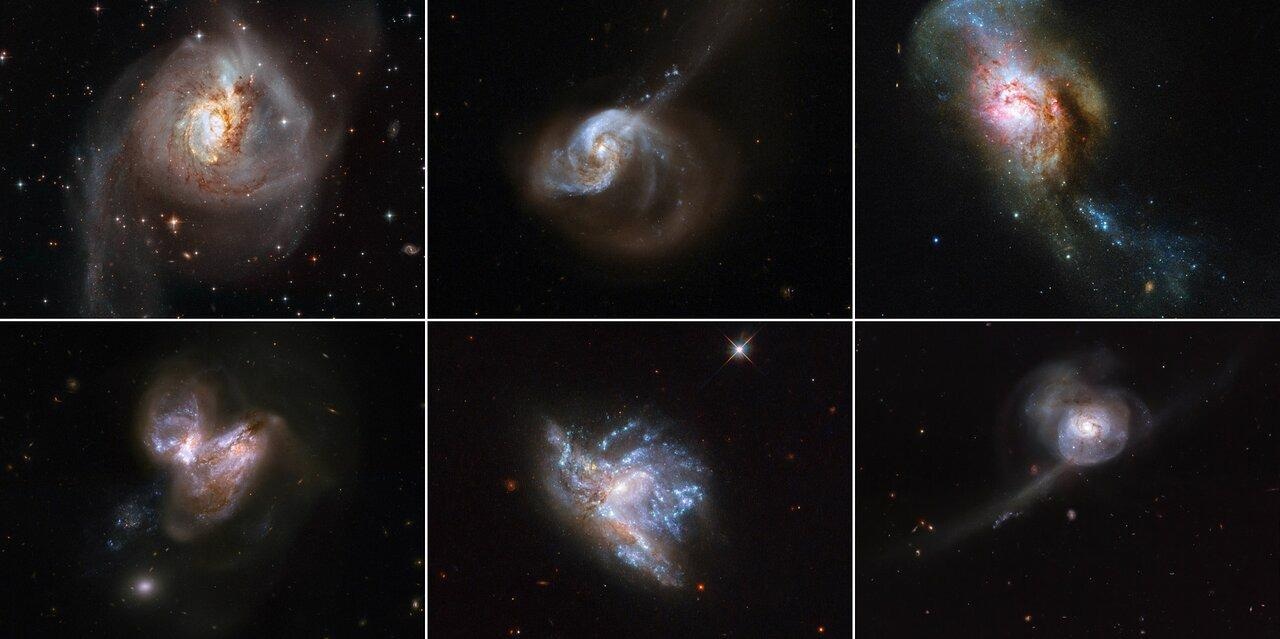Jan 8 2021
As a new year celebration, the NASA/ESA Hubble Space Telescope has released a collage of six splendid galaxy mergers.
 Hubble showcases six galaxy mergers. Image Credit: ESA/Hubble, NASA.
Hubble showcases six galaxy mergers. Image Credit: ESA/Hubble, NASA.
Each of the merging galaxies was investigated as part of the latest HiPEEC survey to analyze the rate of formation of new stars in such systems. Such interactions are a crucial feature of galaxy evolution and form one of the most magnificent events in the lifespan of a galaxy.
Galaxies experience drastic changes in their stellar content and appearance during such rare merging events. These systems are brilliant testing grounds to track the formation of star clusters under intense physical conditions.
In general, the Milky Way forms star clusters that have masses 10,000 times that of the Sun. This does not correspond to the masses of the star clusters that form in colliding galaxies, which can become millions of times the mass of the Sun.
Moreover, such dense stellar systems are highly luminous. Even after they collide, when the ensuing galactic system starts to fade into a more stable phase, such enormous star clusters shine through their entire host galaxy, as prolonged witnesses of previous merging events.
Through the investigation of the six galaxy mergers illustrated in this study, the Hubble imaging Probe of Extreme Environments and Clusters (HiPEEC) survey has analyzed how star clusters are influenced during collisions by the very quick changes that dramatically increase the rate of formation of the new stars in these galaxies.
Hubble’s potentials have rendered it feasible to resolve large star-forming 'knots' into a number of compact juvenile star clusters. The near-infrared and ultraviolet observations of these systems by the Hubble Telescope have been employed to derive masses, ages, and extinctions of star clusters, as well as to investigate the rate of formation of stars in these six merging galaxies.
The HiPEEC survey shows that the star clusters experience massive and quick changes to their properties, where the most enormous clusters are formed toward the end of the merger phase.
Each of the merging systems illustrated in this study has previously been observed and reported by Hubble, as early as 2008 and as recently as October 2020. In 2008, the Hubble Space Telescope commemorated its 18th anniversary by publishing a montage of 59 images of merging galaxies.
Journal Reference:
Adamo, A., et al. (2021) Star cluster formation in the most extreme environments: insights from the HiPEEC survey. Monthly Notices of the Royal Astronomical Society. doi.org/10.1093/mnras/staa2380.